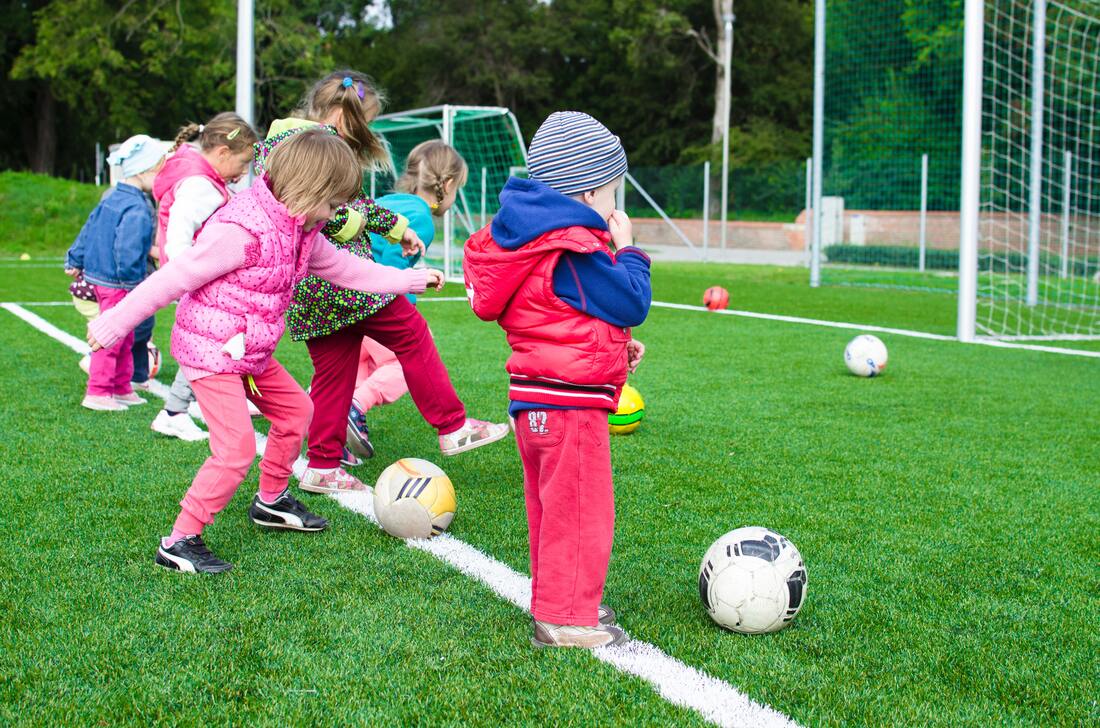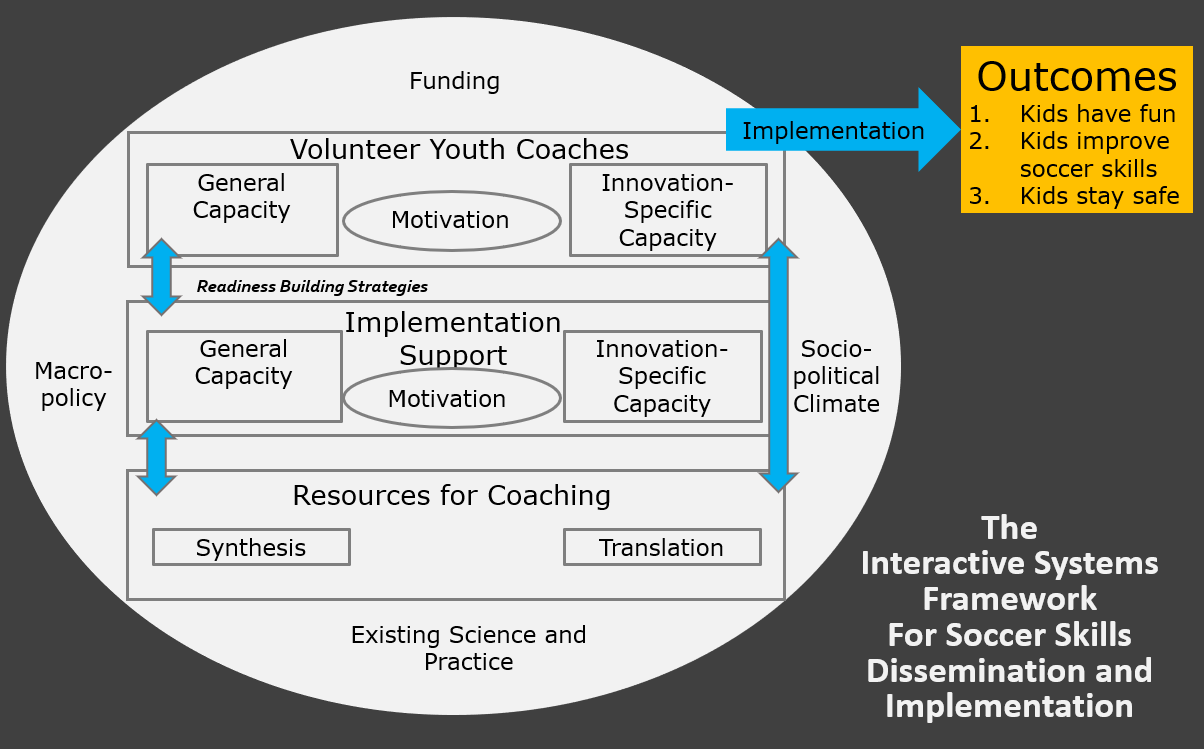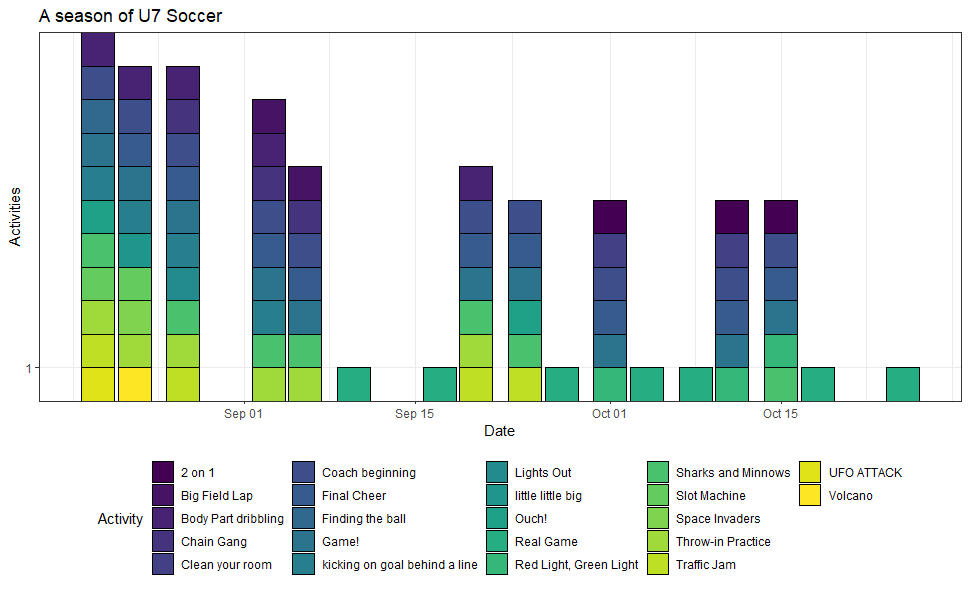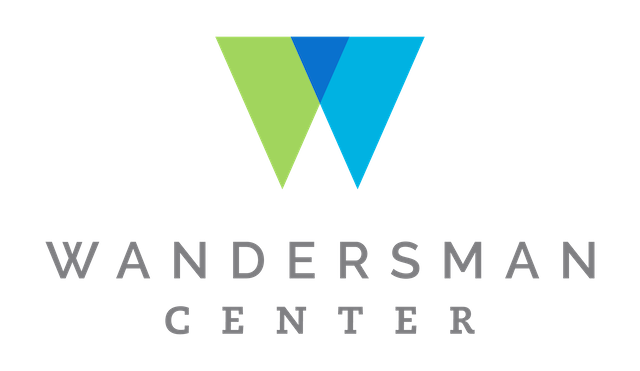An organization has a thing they are trying to do. They then need to train up and support the people within that organization to do that thing. In my case, the thing was coach a bunch of five and six-year-olds. And, like organizations, my readiness to coach varied throughout the season. And, like well-functioning organizations, I was able to use data to help monitor performance and improve. We can use the Interactive Systems Framework to think through how coaching unfolded. The ISF says there are three systems to bridge research and practice. The Delivery System. These are the front line providers implementing the intervention. In this case, it’s coaches who are helping the kids to learn and play soccer. It’s important to note that “no experience was necessary.” So, implicit in this request is that I had sufficient motivation to learn to coach soccer and sufficient general capacity (time, health, social skills). The Support System. This group assists in implementation by building momentum and capacity. Here, this was probably (??) the Exeter Youth Soccer Association. The Synthesis and Translation System. There’s not much evidence out there about best practices to build skills. I looked. There is stuff about improving aerobic capacity in teenage soccer players, but that’s not really what would help improve my ability to coach. The S&T system packages the evidence in a form in a way that can be used by the Support or Delivery Systems. Lacking an S&T system for youth soccer, I had to resort to googling exercises and relying on internet ratings for whether or not they would be useful. The Support System has a few levers to build capacity. There are tools: packaged sets of information, like manuals, dashboards, worksheets, and so on. Training, something that is quite popular in organizations, involves delivering content and providing experiences to build knowledge, skills, and abilities. Technical Assistance is ongoing support and feedback that helps receipts enhance their skills and improve their efficacy. Finally, Quality Improvement/Quality Assurance provides a mechanism for tracking implementation quality and improving should deficits be observed. The season began with a coach-level meeting and training session. A more experienced coach ran us through a bunch of exercises. Frankly, it wasn’t that helpful and pretty annoying by the end. There wasn’t a clear rationale about why we were doing specific games, and whether these would be generalizable to the young kids. Also, my own momentum waned as we hit the 90 minutes mark on a school night as a volunteer. My general capacity is a fixed quantity. Something not addressed at this coaches’ training was what purpose of all this was. So, at the first practice, I took it upon myself to come up with a set of group norms (or culture) for these kindergarteners. These included 1) We’re here to have fun, 2) We’re here to get better at soccer, and 3) We’re here to play safe. Throughout the season, I made sure to revisit these, probably mostly for me, to keep myself grounded on what I was trying to do. Over the first few practices, I kept track of what games worked and which weren’t that great. Game 1 was fine. Game 2 was also mostly fine, but we got crushed. Game 3 wasn’t great. By this point, I could start to see patterns emerging in the game. The kids were hanging back too much on defense, parking in the goals, and not coming out to challenge incoming balls. This wasn’t just that one kid, either. There wasn’t a stinker on the entire team. The kids were pretty good! But they weren’t playing well. Even my wife started to criticize my coaching. This situation called for some quality improvement. The ultimate goal was to get better at soccer, but a more proximal goal was to improve their defense. I went back to the drawing board and research different skills and games that we could use. So, instead of sharks vs. minnows and traffic jam, we used more defense-oriented games like clean your room and some two-on-one drills. The kids were also bunching up a lot, so we worked on spacing by keeping track of positions and trying to pass in between them. Overall, this worked okay. We still got beat in games 4 and 5, but at least the kids were starting to come out of the goal to challenge for the ball. We’re not supposed to keep score, but I think our final record was 0–7. With that in mind, I think we can go back and think through ways that a soccer association can have better support for their volunteer coaches. These suggestions are predicated on the assumption that the goal of the soccer association is to develop soccer players.
Since I’m clearly on a list of “potential coaches” now, I hope that there can be a clearer support system so that the kids can have fun, get better at soccer, and maybe learn something.
23 Comments
Adam S
4/10/2021 05:00:52 pm
Are you still coaching? Any improvements? I'm having similar struggles.
Reply
3/27/2023 09:56:34 pm
Thanks for sharing this information. I have been looking everywhere to know about this. Awesome content.
Reply
escort service in park street
Reply
escort service in south delhi
Reply
5/6/2024 04:31:03 am
Join us for lovely time with sexy call girls in Kolkata.
Reply
5/24/2024 12:28:48 pm
Indulge in a world of tranquility and rejuvenation with our exclusive spa services. We invite you to experience the ultimate in relaxation with our luxurious treatments, designed to pamper your body and soothe your mind.
Reply
6/10/2024 01:37:49 am
If you are in Bengal and searching for some fun, call Night Hub Escort for lovely & beautiful Kolkata call girls.
Reply
6/12/2024 12:01:50 am
Join us for lovely time with sexy call girls in Kolkata.
Reply
6/13/2024 12:30:52 pm
If you are in Bengal and searching for some fun, call Night Hub Escort for lovely & beautiful Kolkata call girls.
Reply
6/26/2024 05:06:03 am
Book your appointment today and treat yourself to a special day of bliss.
Reply
Experience Premier Kolkata Escort Services with Sarika Sen
Reply
7/14/2024 03:06:20 am
Your appreciation means a lot! It's like putting together a puzzle—finding the perfect word is like finding that missing piece that completes the picture of your writing. Keep practicing, and you'll definitely see progress!
Reply
7/15/2024 01:35:59 am
Fire Alarm Systems for Ultimate Safety
Reply
7/22/2024 05:12:37 am
Discover the rejuvenating power of fillers in Riverside at Skintastic Medi Spa. Our expert team uses the latest techniques to reduce wrinkles, enhance facial contours, and restore youthful volume. Whether you're looking to plump lips, smooth lines, or add definition to your cheeks, we tailor treatments to meet your unique needs.
Reply
Leave a Reply. |
Categories
All
Archives
September 2023
|




 RSS Feed
RSS Feed
